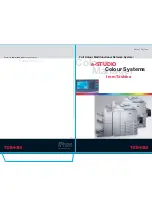
Understanding System Redundancy
ExtremeWare XOS 11.1 Concepts Guide
53
Replicating data consists of the following three steps:
1
Configuration synchronization—Relays current and saved configuration information from the master
to the backup
2
Bulk checkpoint—Ensures that each individual application running on the system is synchronized
with the backup
3
Dynamic checkpoint—Checkpoints any new state changes from the master to the backup
To monitor the checkpointing status, use the
show checkpoint-data {<process>}
command.
Relaying Configuration Information
To facilitate a failover from the master MSM to the backup MSM, the master transfers its active
configuration to the backup. Relaying configuration information is the first level of checkpointing.
During the initial switch boot-up, the master’s configuration takes effect. During the initialization of a
standby or backup MSM, the master’s saved configuration is copied to local flash. After the
configuration is saved, the master transfers the current active configuration to the backup. After the
MSMs are synchronized, any configuration change you make to the master is relayed to the backup and
incorporated into the backup’s configuration copy.
NOTE
To ensure that all of the configuration commands in the backup’s flash are updated, issue the
save
command after
you make any changes.
If a failover occurs, the backup MSM continues to use the master’s active configuration. If the backup
determines that it does not have the master’s active configuration because a run-time synchronization
did not happen, the backup uses the configuration stored in its flash memory. Because the backup
always uses the master’s active configuration, the active configuration remains in affect regardless of
the number of failovers.
NOTE
If you issue the
reboot
command before you save your configuration changes, the switch prompts you to save your
changes. To keep your configuration changes, save them before you reboot the switch.
Bulk Checkpointing
Bulk checkpointing requires that the master and backup run-time states be synchronized. Since
ExtremeWare XOS runs a series of applications, an application starts checkpointing only after all of the
applications it depends on have transferred their run-time states to the backup MSM.
After one application completes bulk checkpointing, the next application proceeds with its bulk
checkpointing.
To monitor the checkpointing status, use the
show checkpoint-data {<process>}
command.
To view the status of bulk checkpointing and see if the backup MSM is synchronized with the master
MSM, use the
show switch {detail}
command.
Содержание ExtremeWare XOS 11.1
Страница 16: ...Contents ExtremeWare XOS 11 1 Concepts Guide 16...
Страница 20: ...Preface ExtremeWare XOS 11 1 Concepts Guide 20...
Страница 21: ...1 Using ExtremeWare XOS...
Страница 22: ......
Страница 78: ...Managing the ExtremeWare XOS Software ExtremeWare XOS 11 1 Concepts Guide 78...
Страница 168: ...Virtual LANs ExtremeWare XOS 11 1 Concepts Guide 168...
Страница 200: ...Policies and ACLs ExtremeWare XOS 11 1 Concepts Guide 200...
Страница 252: ...Security ExtremeWare XOS 11 1 Concepts Guide 252...
Страница 265: ...2 Using Switching and Routing Protocols...
Страница 266: ......
Страница 294: ...Ethernet Automatic Protection Switching ExtremeWare XOS 11 1 Concepts Guide 294...
Страница 354: ...Extreme Standby Router Protocol ExtremeWare XOS 11 1 Concepts Guide 354...
Страница 416: ...IP Multicast Routing ExtremeWare XOS 11 1 Concepts Guide 416...
Страница 417: ...3 Appendixes...
Страница 418: ......
Страница 432: ...Software Upgrade and Boot Options ExtremeWare XOS 11 1 Concepts Guide 432...
















































